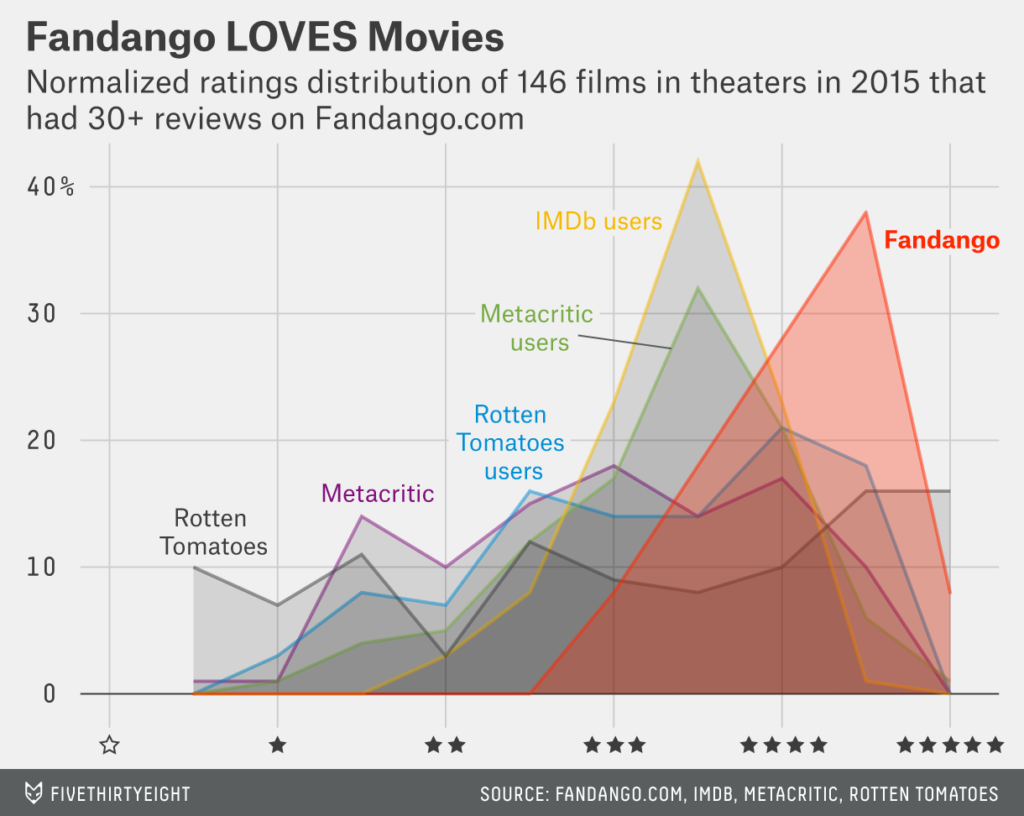At the Fandango movie review page, almost every film in its “Now Playing” list had four or five stars. Not so at Rotten Tomatoes.
Where are we going? To inflation.
Fandango’s Movie Stars
To check out a film, we can go to Rotten Tomatoes, Metacritic, IMDb or Fandango. The statistics website fivethirtyeight, though, suggests we stick with the first three “review aggregators” because they tend to use more of their ratings scale, are pretty consistent and avoid outside interference.
On the other hand, Fandango might be less dependable. You can see below that Fandango’s reviews lay primarily in five star territory while ratings from Rotten Tomatoes and Metacritic were far lower.

Fivethirtyeight suggested that the math at Fandango was one reason for its higher numbers. Based on stars and half stars, the Fandango rating scale requires rounding. The problem is that 4.1 becomes 4.5 and 4.6 is a 5.0. (Our math teachers would be horrified.) Asked about the system, they said it was a “glitch” in their software.
You can see below how one cause of Fandango’s numbers could be rounding:

Whether the reason is rounding or the incentive to make movies sound better because then Fandango might sell more tickets, the result is that mediocre films get too many stars.
Our Bottom Line: Reasons for Inflation
Like prices and grades, stars can be called inflationary when they distort value.
With prices, the primary cause of inflation is the money supply. Comparing the money supply to the value of the goods and services an economy produces, economists suggest a balance. Too much money chasing too few goods and services and you get rising prices whereas an inadequate money supply has the opposite effect.
The ideal appears to be slight inflation—maybe two percent—because predictable price increases provide appropriate incentives to businesses.
Should movies also enjoy slightly inflated reviews?






